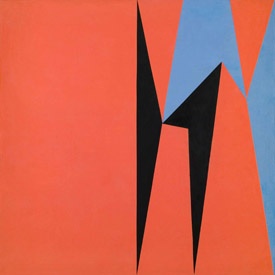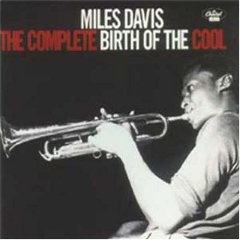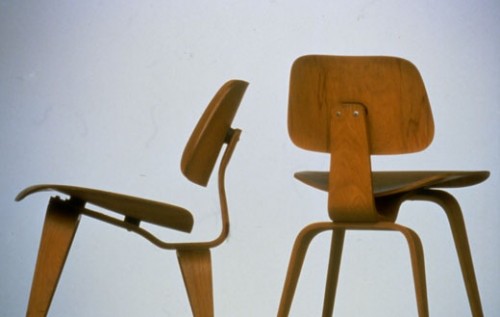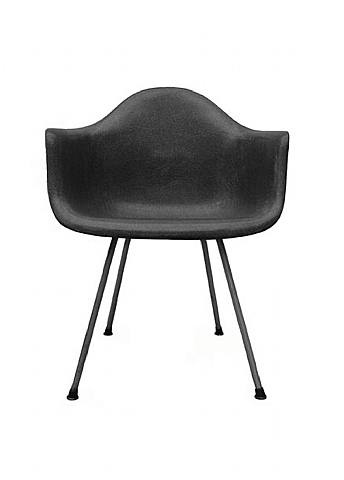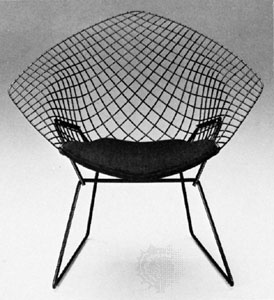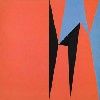Birth of The Cool at Addison Gallery
Disappointing 1950's California Style Exhibition
By: Mark Favermann - Mar 21, 2008
Birth of the Cool: California Art, Design, and Culture at Midcentury
At the Addison Gallery of American Art
Philips Academy
180 Main Street, Andover, Massachusetts
978-749-4015
http://www.andover.edu/addison/
The exhibition was organized by Elizabeth Armstrong, chief curator at the Orange County Museum of Art in Newport Beach, Calif.
February 15-April 13, 2008
Before I start this review, I want to underscore the point that I always support and am usually totally positively disposed toward any exhibit that is about or includes serious design. However, with that said, I want to also say that as a critic, I have to call them as I see them. With exhibitions of all kinds, sometimes the promise is greater than the results. This is certainly the case with Birth of the Cool: California Art, Design, and Culture at Midcentury now featured at the Addison Gallery. However, I do recommend the show as something to be seen and decided about individually.
Arguably, one of the most ambitious exhibits organized on this period of our cultural history, this show includes over 150 objects. The various pieces include objects and works of painting, architecture, furniture design, decorative and graphic arts, film, and music that were involved in launching mid-century modernism in the United States. This stylistic array certainly helped to establish Los Angeles as a major American cultural center.
The exhibit attempted to display an interdisciplinary approach to the subject attempting to mirror the 50's era by inclusion of a jazz lounge, a media bar with film, animation, and television programming, a period art gallery as well as selections of art, architectural, and documentary photography. I say "attempted" because I felt that the curating at the Addison left a lot to be desired. I found the environmental attempts very meager in the large gallery spaces of the Addison Gallery. Unlike the spirit of true cool inspired by Miles Davis' seminal album, "Birth of the Cool," this exhibition seems to be a dull hum. I was transported to my childhood memories of 50's kitsch articulated at the Addison in a rather sterile way rather than infused with American confidence and a mid-century newness.
The exhibition also attempted to explore the similarities among what was a rather dynamic community of architects, designers, artists, filmmakers, and musicians working on the West Coast in the immediate postwar era. But the affinities were visually a bit like rubbing shoulders rather than strongly stating any design or even cultural relationships or clear connections. Most prominent among them were the great design team of Charles and Ray Eames. Even their groundbreaking design pieces of furniture and furnishings (which actually strongly began in the 1940's) are here presented in an oddly unappealing way as if they had been left in an old furniture warehouse set on an open shelf and borrowed for this exhibit. The rather commercial presentation does not dignify the Eames iconic, sculptural furniture. A museum should not be used as a furniture showroom like IKEA or Design Within Reach.
The exhibits multidisciplinary approach is rather confusing. It just does not hang well together. Unless they are of a certain age or knowledge level, average viewers will probably be bored by the show's labels. Little is truly thought-provoking. What appears to emerge is an attempt to justify a style without much passion. Actually, except for the architecture, I didn't see much here that was opposite to similar trends on the East Coast at the time. California Cool indeed. Perhaps the rather modest paintings shown could be considered a counterpoint to the East Coast's Abstract Expressionism. I felt that they were at best decorative, at worst academically vacant. A sidebar: the long ago installed Sol LeWitt abstract fragment paintings on the main Addison gallery's ceiling were stronger than the California canvases hung on the walls. Wasn't LeWitt from the East Coast, born in Hartford and lived in NYC? His work was an excercise in color and line. It was rather mechanical and also generally decorative. Here. I got confused.
Surprisingly, graphic design and print was most lightly touched upon, yet that was a major contribution to design during the 1950's. Certainly, there was a great deal of publishing going on in California then. And just as certainly, some of it was probably very well designed. Playboy Magazine was the visually vocal vehicle for the cool's adoption or at least admiration. Certainly even Playboy had some design quality even if it was published initially in Chicago.
Cool jazz was probably born in New York City. It was in Manhattan where Miles Davis and his nine piece group was organized in the late 1940s. His music was an alternative to hot bebop. And, it was in NYC that Miles recorded his hugely influential tracks later collected in the album "Birth of the Cool." But somehow, according to this show, it was in California in the 1950s that actually cool jazz and cool art took root. Certainly, a number of musicians migrated to California. It is a nice thematic device, but I don't totally buy it.
The many paintings shown are generally flat, sharp-edged and colorful, Their highly graphic quality suggests abstract backgrounds for paperback book covers or backdrop designs for movie credits (think "The Man With A Golden Arm"). Four of the best known California period painters were Karl Benjamin, Frederick Hammersley, Lorser Feitelson and John McLaughlin. Though I was not very familiar with them, their work was historically designated as "abstract classicism." Clearly, not as classic as the name, this art was certainly laid back and a bit low key. Even its more colorful examples lacked a zestiness. I am not sure that it was really cool at all.
Paintings may take up the most space in the exhibition, but the most elegant visual expression of the "cool" can be seen in the clearly brilliant architectural photographs of Julius Shulman, He conveyed a distinctive and an expanded sense of the meaning of California cool. Some of Mr. Shulman's sleek rather luminous pictures of the Case Study houses, a series of midcentury works by Richard Neutra, Eero Saarinen and other gifted and prominent architects that show the adaptability of Modernist architectural principles to residential housing are glamorous and yet very viscerally appealing.
Shulman's pictures unusually included live models depicting visions of the good life. The photographer's nuanced environments were masterful. Here, best portrayed through architectural visualization, California cool is the progeny of an optimism born of post-World War II prosperity and potential unlimited personal and corporate growth. Strangely and rather badly, at first, I did not connect the photographs to the major exhibit as they were physically separated from each other at the Addison.
There was also a continuous loop of a Charles and Ray Eames short film of spinning tops that morphed into chair fragments. Jazz was theme music. This film underscored a certain innocence of the period and of course the childlike joy expressed by the Eameses themselves in almost everything that they designed and created. Were the Eameses cool? Probably not, as there was certainly a passion to how and what they did. They were based in California, though.
For a myriad of reasons, California cool did not survive the 1960s. Though perhaps, an exhibition about similar themes could have included better examples and been better and more excitingly presented, shows with historic and wonderful design are always cool.

